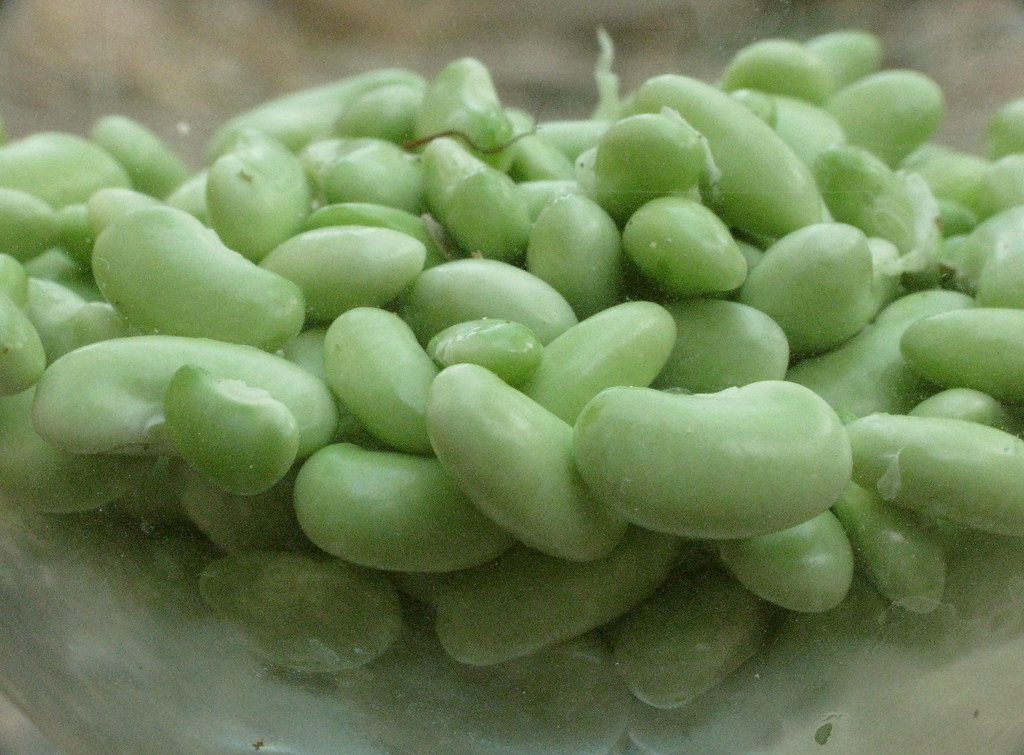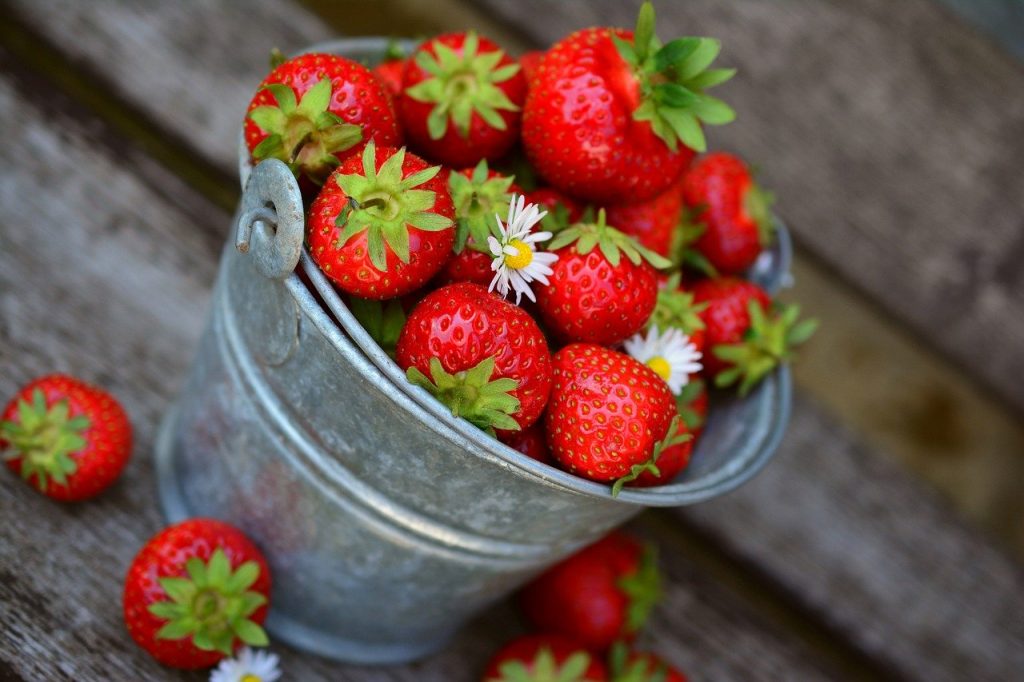[Article updated on 19/09/2023]
The health benefits of fruits and vegetables come from their vitamins, minerals and antioxidants which help strengthen the immune system, especially when combined with regular exercise. Fruits and vegetables may also reduce the risk of high blood pressure, heart disease and cancer. Fruits and vegetables are naturally rich in fiber which promotes good digestion. To benefit from their benefits, I invite you to read my article dedicated to fruits and vegetables in F.
Flageolet
Also known as “caviar bean”, flageolet is a variety of common bean (Phaseolus vulgaris) very popular in France. The seeds of this great classic of French cuisine have a soft shell and a kidney shape. These delicious beans are harvested just before they are fully ripe. Drying in the shade preserves their characteristic light green color. Ideal as an accompaniment to meat or fish, green flageolet is often associated with local dishes. This creamy and mild bean is traditionally enjoyed with spring lamb or in cassoulet-type dishes.

Lamb flageolet is a typical Provençal dish which is served at Easter. Tender roast lamb and delicate flageolet infuse with the fragrant flavors of garlic, fennel, white wine and tomatoes, giving this dish a rich flavor and hearty texture. It is excellent with roasted garlic and tomatoes. You can also enjoy them alone, well seasoned with butter or olive oil. Flageolet is an excellent source of fiber and protein. It also contains magnesium and vitamin B9.
Bean
The bean is a seed vegetable, which is picked from Vicia Faba, a plant of the legume family. The fruit of this plant is a large pod, about 30 centimeters long, cylindrical or flattened and ending in a point, erect or hanging. Inside are 2 to 10 seeds which make up the edible part of the plant. The seeds are green at first, then darken to a hazel to brown color when ripe.
The beans can be eaten raw or cooked, fresh or dried. They can be eaten with pasta or other cereals such as spelled or rice. They can be eaten in soup or salad. Fresh beans are a very nutritious and low-calorie legume. Dried beans are approximately 4 times more caloric than fresh beans. Beans are a source of various nutrients, including minerals like phosphorus, potassium and iron and vitamins like vitamin A, folate and vitamin K.
Fennel
Fennel is a leafy vegetable from Foeniculum vulgaria, a perennial plant of the Apiaceae family. The fennel plant forms a white heart at the base, which is the vegetable of interest to the grower. Fennel is a vegetable with many facets in the kitchen. Its anise or licorice taste comes from anethole, an aromatic compound also present in anise and star anise. With a mild flavor and crunchy texture, fennel can be eaten raw or cooked and is very useful in promoting satiety and digestion. The fennel gratins are very good.
Fennel is a plant rich in water, low in calories, which is well suited to be used as an appetite suppressant in low-calorie diets. It is also rich in fiber, mineral salts and vitamins. 100 grams of fennel contains approximately 7% of the recommended daily intake of potassium, 5% of the recommended intake of phosphorus and calcium and 2% of the recommended intake of vitamin A.
Raspberries
Raspberry is the edible fruit of a diversity of plant species belonging to the genus Rubus and the Rosaceae family. The fruits are generally more or less dark red. The raspberry is like a large blackberry with a conical shape. It is composed of numerous small drupes, with a very intense and pleasant aroma. In cooking, raspberries have a very varied use. Tasty, they can be served with ice cream, added to cakes, served with whipped cream, in fruit salads and pancakes.
Raspberries are also widely used for the production of jams, syrups and jellies. The puree is particularly suitable for preparing puddings and ice creams. The best fruits are generally intended for rapid freezing to obtain a quality product intended mainly for confectionery, as well as the ice cream and yogurt industry. They are also used to flavor liqueurs and brandy. Raspberries, when eaten fresh, provide the body with a good amount of vitamins A and C, citric acid, pectin and fructose.
Strawberry
By the term strawberry we mean the edible part of the plant Fragaria vesca. The strawberry belongs to the Rosaceae family, the Rosoideae subfamily and the Fragaria genus. Botanically speaking, strawberries are not true fruits, but the enlarged receptacle of an inflorescence. The surface of the strawberry is covered with numerous yellow or brown dots. The real fruits are the achenes, that is to say the yellow seeds that can be seen on the surface of the strawberry.

Strawberry has an excellent aroma and sweet taste. There are wild ones and cultivated ones. Strawberries have become a main ingredient in countless foods such as yogurts, ice creams, jams. It can also be eaten as is. In addition to mineral salts and fiber, strawberries have an even higher vitamin C content than citrus fruits. They have very few calories even though they look very sweet.
Fig
The fig is the fruit of the fig tree (Ficus carica). From a botanical point of view, the fig is an infructescence, that is to say a set of fruits. Figs are not demanding as to the method of preparation. They can be eaten whole or cut into pieces. They can be eaten sweet, salty, cold or hot. You can prepare compotes, preserves or use them to make desserts. Dried and roasted figs are used as a coffee substitute.
Figs contain a lot of fiber. For this reason, they are recommended for people suffering from constipation. They contain a lot of vitamins C and B, potassium and calcium. They are a rich source of zinc, thanks to which they support the regulation of the endocrine system. In addition, they participate in the deacidification of the body. Figs have antibacterial properties. Due to the fact that they contain a lot of iron, they can be useful in combating anemia. Fig juice is an excellent source of polyphenols and flavonoids. These are antioxidants whose task is to fight the damage caused by free radicals.
